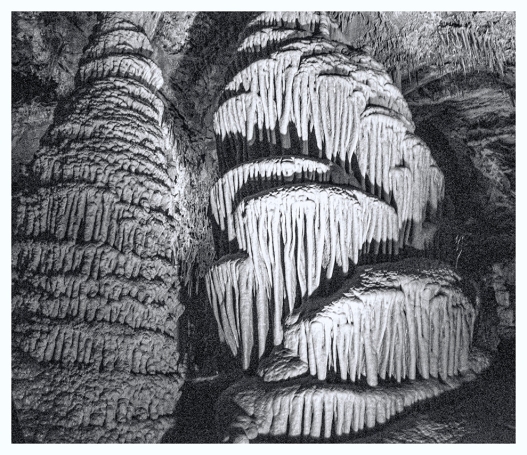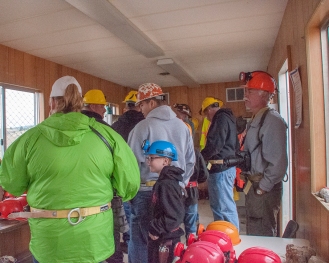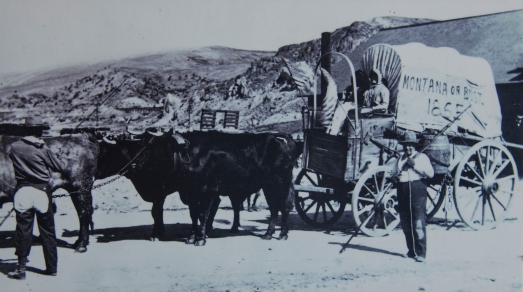So we’re on the road heading to West Branch State Park in Ohio. We have driven through Ohio but never camped there. This stay will cross that state off the list and leave us with only 2 states in the lower 48 we have not stayed in (West Virginia and Connecticut). West Branch SP is a great park for exploring northeast Ohio and we’d come back here any time. We arrived in good weather but saw that would change so we headed to Cuyahoga National Park. This is one of the most urban of our National Parks. Maybe it’s because we were raised in very similar areas but we really didn’t see a whole lot that seemed special. The area does provide a green belt in an otherwise built up area and is heavily used by walkers and bikers so if for nothing else it is valuable. There is some important history about canal building as well. We used our visit to photograph some wildlife and enjoy a beautiful Spring day.
Some of the places we wanted to see (James Garfield NHS and Perry Victory and International Peace Monument) either were not open or didn’t have their boat trips running for the season. We headed to Canton, OH to see the First Ladies NHS. A small Visitor Center has a few exhibits but the main reason for the site is a tour of President and Mrs. McKinley’s home. It was her family home as well. You access it only by guided tour.
On the way out, being the brochure collector that I am, I picked up a flyer for the Blue Water Majesty miniature ship museum. Steve had put up well with a morning of looking at women’s things so we decided to check this out. Even with the address and our GPS, when we got to the museum we weren’t sure it was the right place. No sign, no other cars and only a small handwritten sign on the door saying open. We went in and were greeted by the owner/model maker, Larry Pulka. We paid our $5 entry fee. That was $5 well spent! This turned out to be one of those hidden gems that we love to find! He started building ships from kits over 40 years ago when his wife said “get a hobby!” Now he is an artist of the first magnitude crafting sailing ships from exotic woods and even bone. He uses no paint but scours the world looking for exotic colored wood. We never knew there was an exotic wood collectors society. He handcrafts every detail of the ships from original plans. Even the cannons have 51 separate parts! The attention to detail is amazing. Each link of his chains are handcrafted. We can’t begin to tell you what a fantastic find this place is. Before you think maybe you’d like to take one home, they starting cost is $25,000 and up with a 2-3 year wait. We settled for a wonderful private tour and lots of photos. Rather than paraphrase information about the models we are posting the info cards on each ship shown. Click on the pictures for enlarged viewing and easier reading. This is but a small sampling of his work.
Then the rain started. Our newly repaired roof leaked worse than ever before! To say we were upset, distressed and just plain mad is an understatement. We checked to see how far away we were from the Prime Time factory in Elkhart, Indiana. Only 5 hours away. We called and told them we’d done everything we could to get this repaired without success. We wanted to come to the factory for repair. With our manufacturer’s warranty due to run out in 4 weeks we expected a run around. Much to our surprise they were very accommodating. The factory repair facility was booked but we were referred to John Klinge RV Repair who did their overflow work. He could take us the next week. So we lived with a bucket and towels and a leaky roof as best we could. Plans for visiting sights in southern Ohio were cancelled and we made plans to go to Indiana. Yes, we contacted the dealer in Pennsylvania and after working our way up the chain to the Service Manager, we eventually got reimbursement for everything spent on the roof “repair”.
By now we were in need of some fun and laughter. The Maier family never misses a Christmas without watching “A Christmas Story”. In Cleveland is the house used for part of the film. It has been turned into a very profitable tourist attraction. Even though it is very commercial, very kitchy and quite pricey, for real fans it is lots of fun. Everyone who goes immediately finds themselves acting out scenes such as sticking their tongue out at the flagpole, posing with the Red Rider BB Gun etc. We learned lots of little known info about the movie and had that well needed laugh.
On to Elkhart, Indiana, RV Capitol of the USA. We dropped the trailer off. John Klinge turned out to be our newest Guardian Angel when he immediately diagnosed the problem as an improperly installed air conditioner. Water damage was extensive and would require removing the roof, removal of sheathing and roof framing, removal of insulation etc. Repairs would take about a week. We hung out in Elkhart for a few days to make sure all was going smoothly.
While in town we visited the RV/MH Hall of Fame. If like us you think MH stands for motor home… wrong! It stands for manufactured housing. This place is huge. We spent all of one afternoon looking at campers and RVs from early 1900s to the 70s. They have so many more RVs to display that an addition is planned. Among our favorites were the oldest known camper, the one owned by Lindberg where he hosted Thomas Edison and Henry Ford and Mae West’s chauffeur driven model.
Since we were here where Prime Time Manufacturing (makers of our Sanibel) is located, we scheduled a visit to the factory. Seeing the construction and quality control was enlightening. We talked at length with the sales rep and he made notes about our issues and suggestions. We viewed a 2019 Sanibel and they have made some good changes. However the separate wine fridge is a bit over the top for us. We followed this with a visit to Goshen, IN and dinner at a Triple D restaurant, South Side Soda Shop. The dinner was just OK but the pie was worth the visit.
We also let our sweet tooth loose at the Wakarusa Dime Store known for their candy display. We had lots of fun doing interior photos of the “old time” candy. Ya, I know it’s what we ate as kids. The extra large jelly beans kept calling our names. So much for dieting!
Thank Goodness for family when you truly find yourself “homeless”. Steve’s brother lives near Yipsalanti, MI so we spent the remaining time there. During our stay we visited River Raisin NHS and toured the old Hutchinson mansion. Anyone else remember sticking S&H green stamps into books as kids? Well Hutchinson was the H of S&H. The home is now the head office of an educational research group. Since our sister-in-law works there we had a tour. Normally this is not open to the public.
We returned to Elkhart and picked up our 5er. John had identified some other issues that would be covered under warranty. Since we had a schedule to meet we arranged to return in the Fall. Lesson learned: unless you can’t move or the problem is a minor one, head to the factory for major repairs.
See you soon for the third and final segment.












































































































































































































